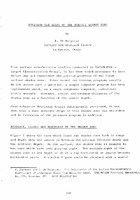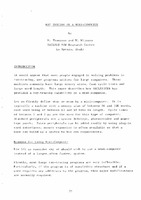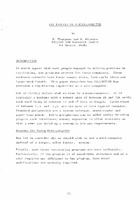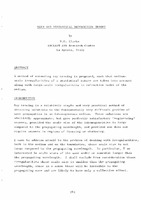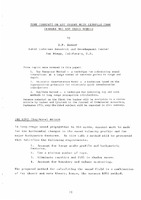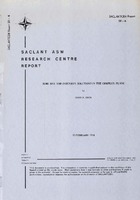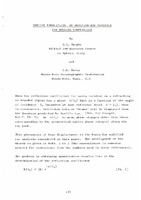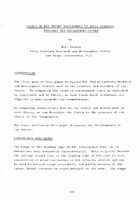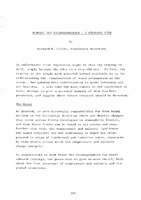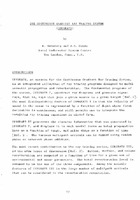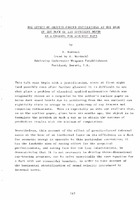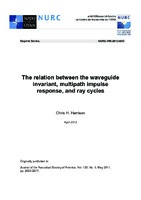Browsing by Subject "Ray tracing"
Now showing items 21-33 of 33
-
Position and shape of the surface shadow zone
(NATO. SACLANTCEN, 1971/12)From surface reverberation studies conducted by SACLANTCEN's Target Classification Group"C , it has been found necessary to know before any sea experiment the precise position of the first surface shadow zone. Since normal ... -
Ray tracing on a mini-computer
(NATO. SACLANTCEN, 1971/12)It would appear that most people engaged in solving problems in ray- tracing, use programs written for large computers . These machines commonly have large memory sizes, fast cycle times and large word length 0 This paper ... -
Ray tracing on a mini-computer
(NATO. SACLANTCEN, 1972/05)It would appear that most people engaged in solving problems in ray- tracing, use programs written for large computers. These machines commonly have large memory si~es, fast cycle times and large word length . This paper ... -
Rays and statistical diffraction theory
(NATO. SACLANTCEN, 1971/12)A method of extending ray tracing is proposed, such that mediumscale irregularities of a statistical nature are taken into account along with large-scale irregularities in refractive index of the medium. -
Sensitivity of ray theory to input data
(NATO. SACLANTCEN, 1971/12)Acoustic propagation problems which are solved using ray theory require certain input data. In particular, the source and receiver locations, sound-velocity field and bottom and surface conditions are required. Frequently, ... -
Some comments on ray theory with examples from current NUC ray trace models
(NATO. SACLANTCEN, 1971/12)Three topics were covered in this paper: 1. Ray Sweep-out Method - a technique for calculating sound intensities at a large number of receiver points in range and depth . 2. Bi-static Reverberation Model - a technique based ... -
Some ray and intensity solutions in the complex plane
(NATO. SACLANTCEN, 1974/02)This paper presents a method to test range-dependent ray-tracing programs. The method is based on complex-function theory. From an analytic function that has a zero point at the emitter, expressions for sound speed, ray ... -
Special formulation of modified ray analysis for machine computation
(NATO. SACLANTCEN, 1971/12) -
Status of ray theory development of Naval Undersea Research and Development Center
(NATO. SACLANTCEN, 1971/12)The first part of this paper discusses NUC (Naval Undersea Research and Development Center) work on the accuracy and validity of ray theory. By comparing the range to convergence zones as indicated by experiment and by ... -
Summary and recommendations
(NATO. SACLANTCEN, 1971/12)An unfortunate first impression might be that ray tracing is dull, simply because the idea is a very old one. In fact, ray tracing is the single most powerful method available to us for understanding the complexities of ... -
The continuous gradient ray tracing system (CONGRATS)
(NATO. SACLANTCEN, 1971/12)CONGRATS, an acronym for the Continuous Gradient Ray Tracing System, is an integrated collection of ray tracing programs designed to model acoustic propagation and reverberation. The fundamental programs of the series, ... -
The effect of gravity-forced oscillations at the base of the duct on its effective depth as a channel for acoustic rays
(NATO. SACLANTCEN, 1971/12) -
The relation between the waveguide invariant, multipath impulse response, and ray cycles
(NURC, 2012/04)The waveguide invariant, b, that manifests itself as interference fringes or "striations" in a plot of frequency vs source-receiver separation, is usually thought of as a modal phenomenon. This paper shows that striations ...
